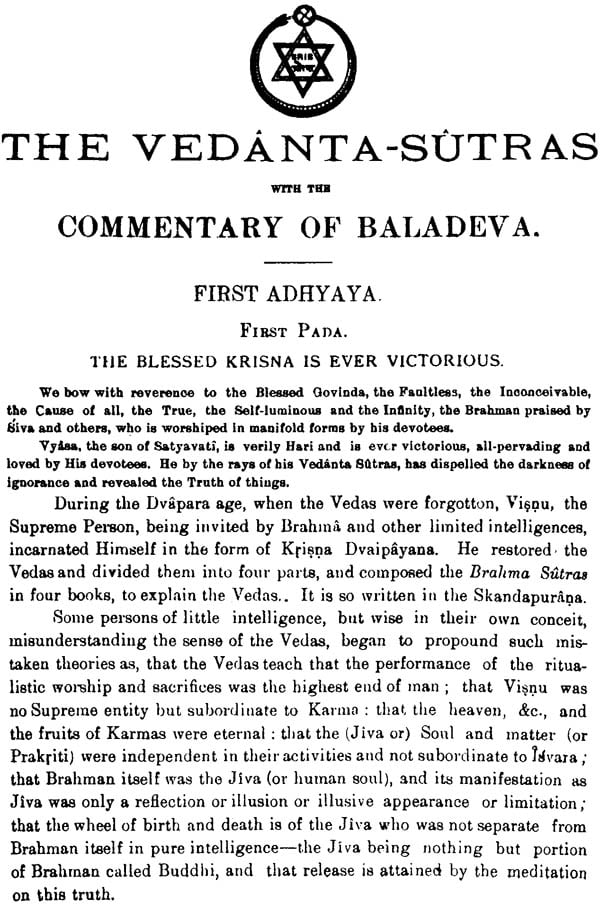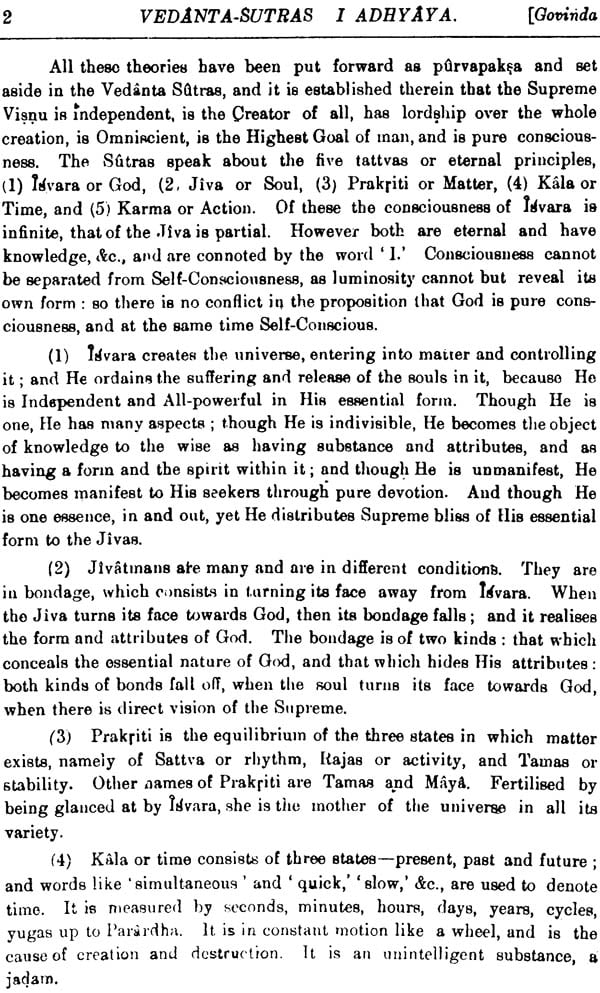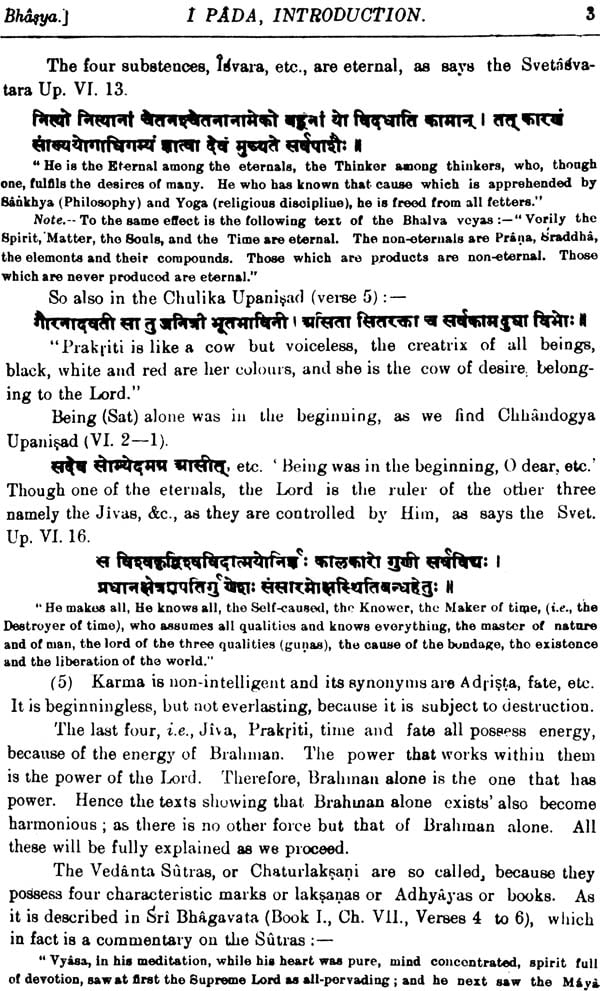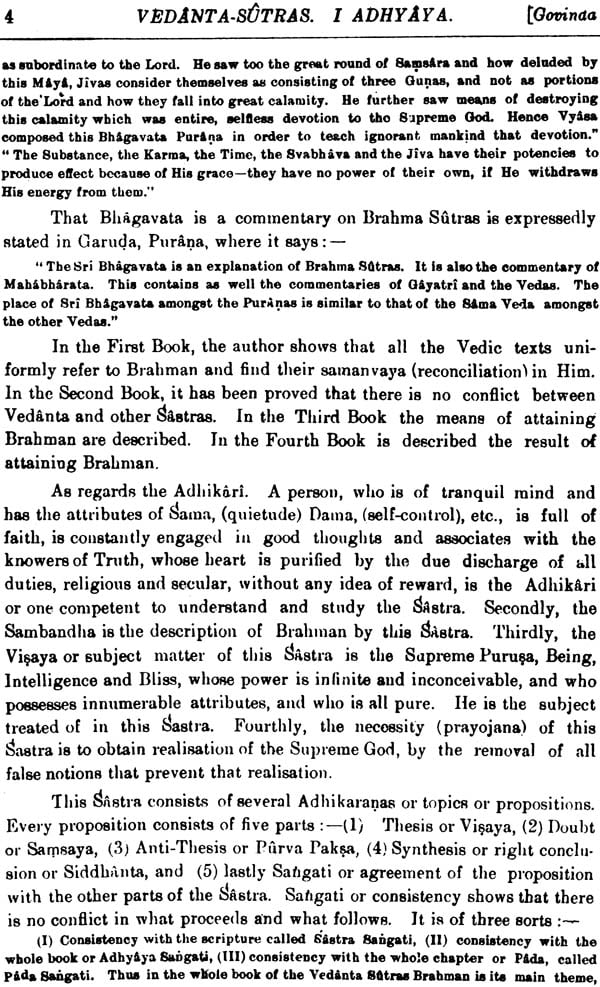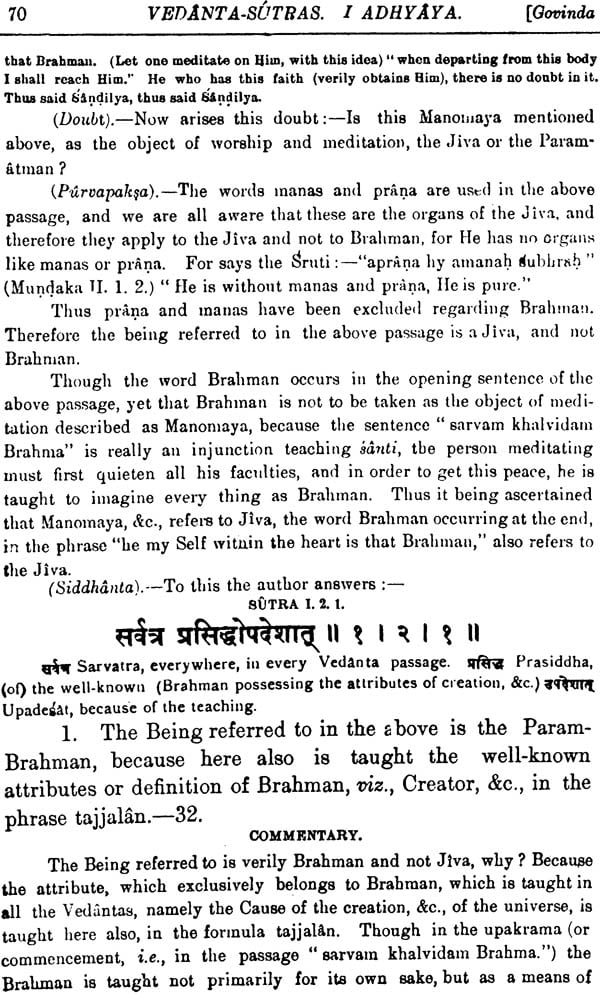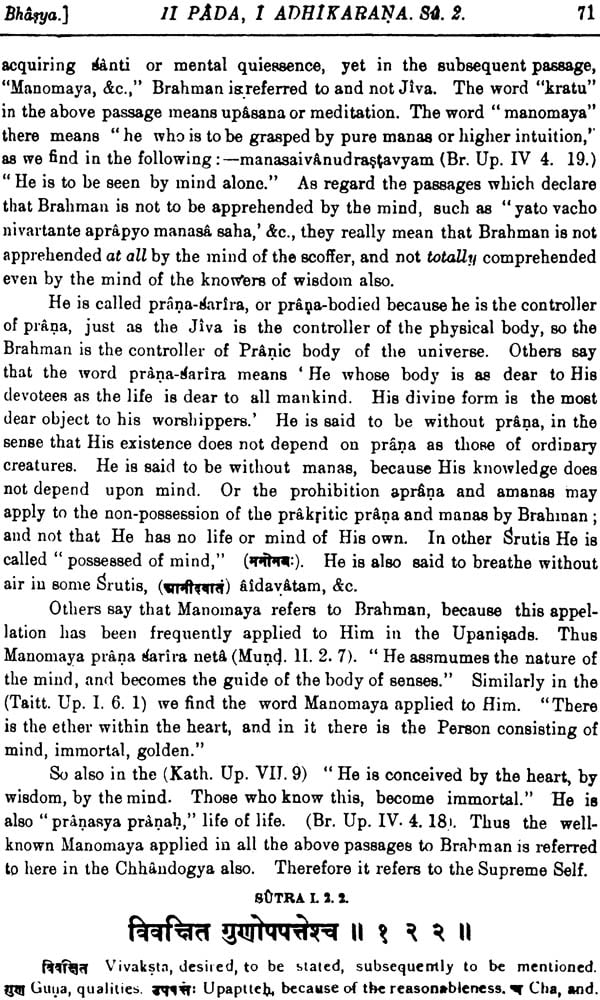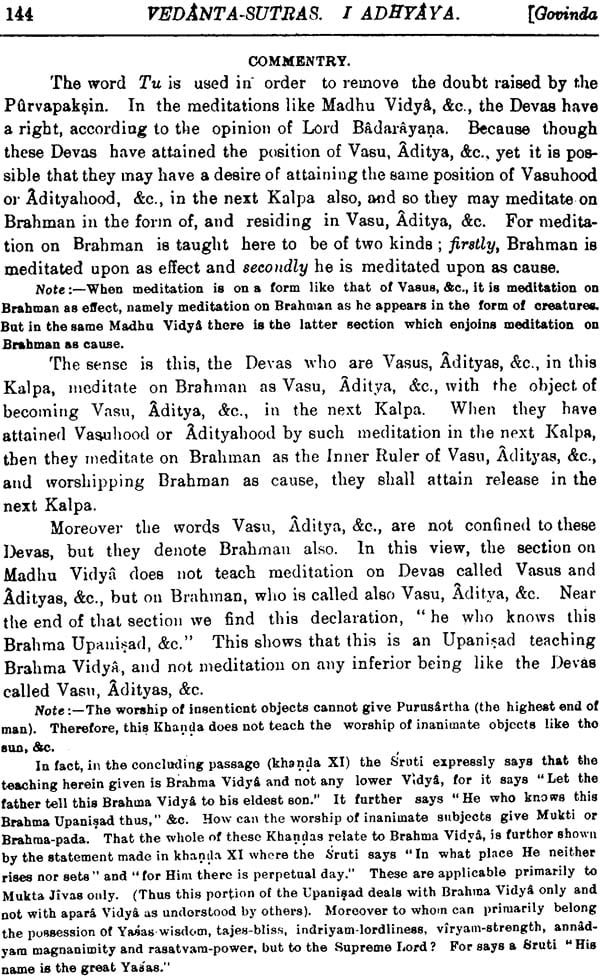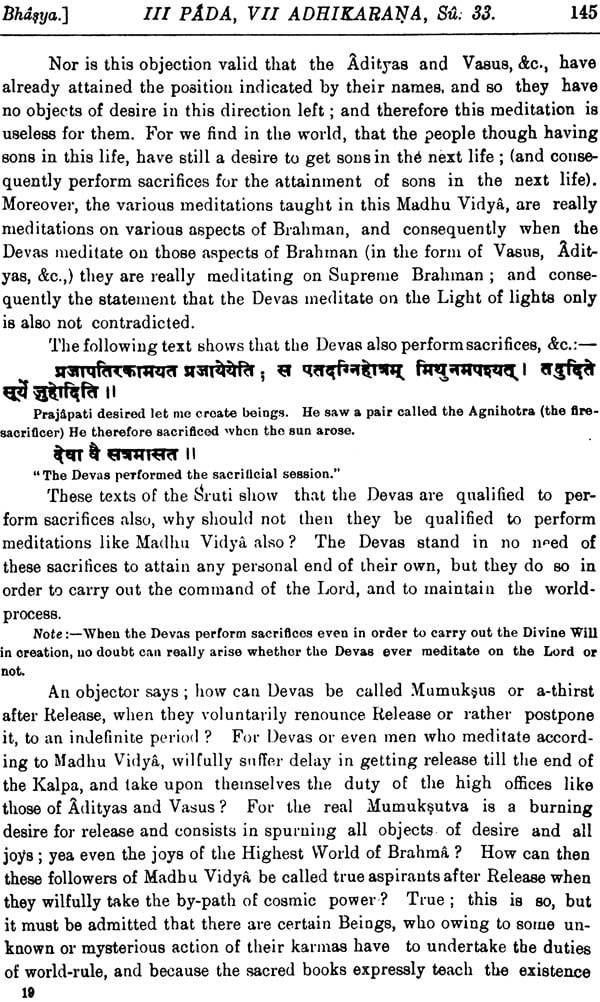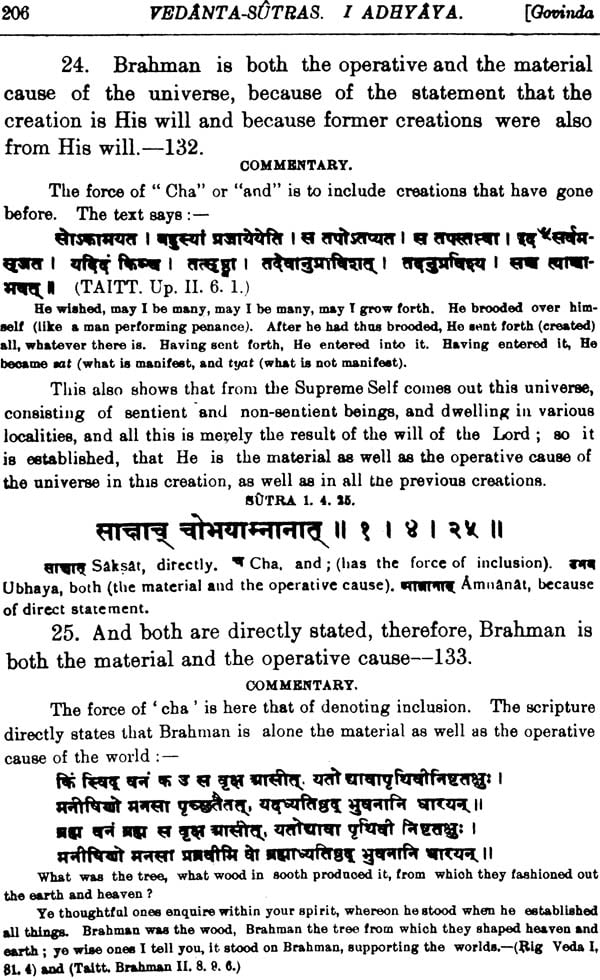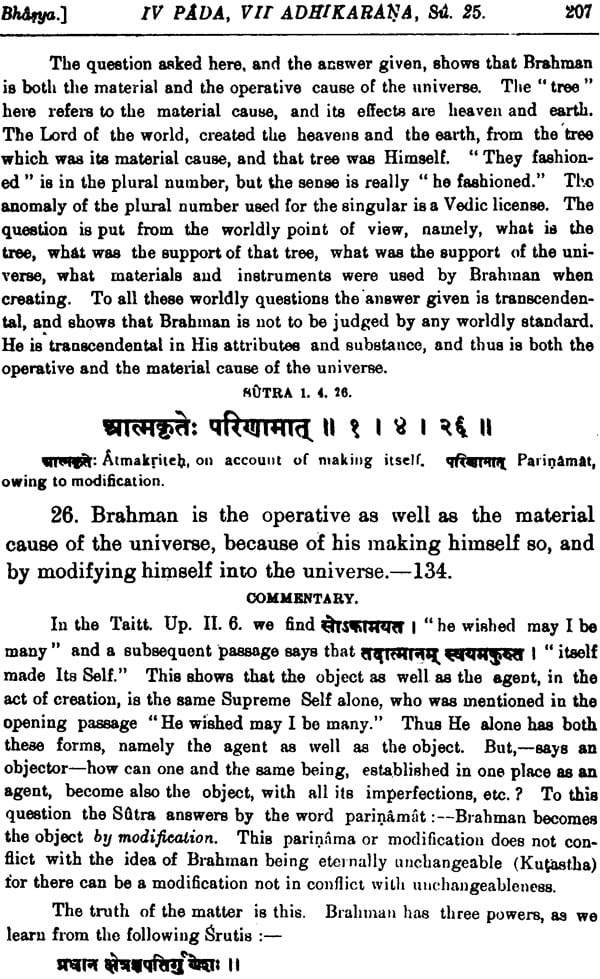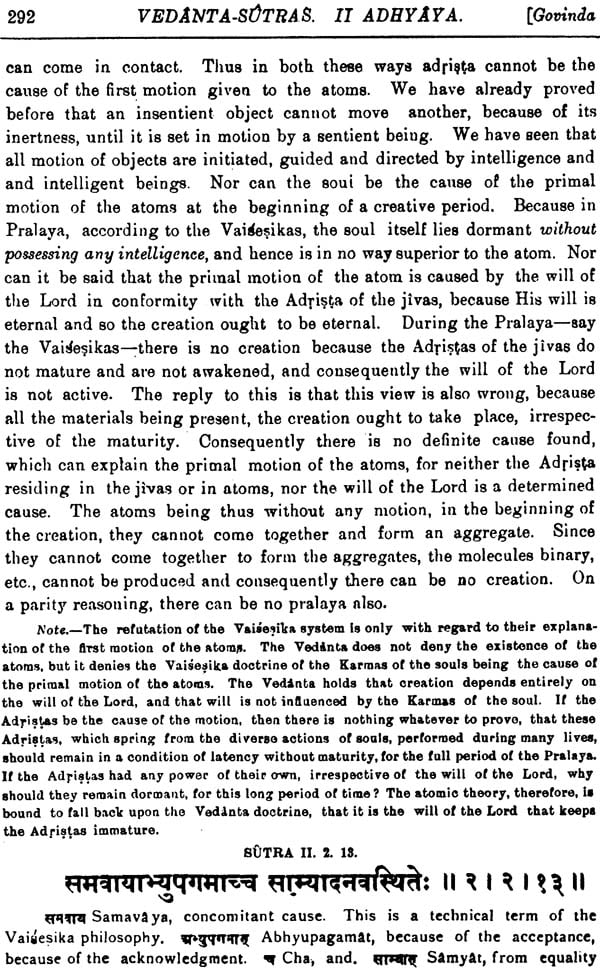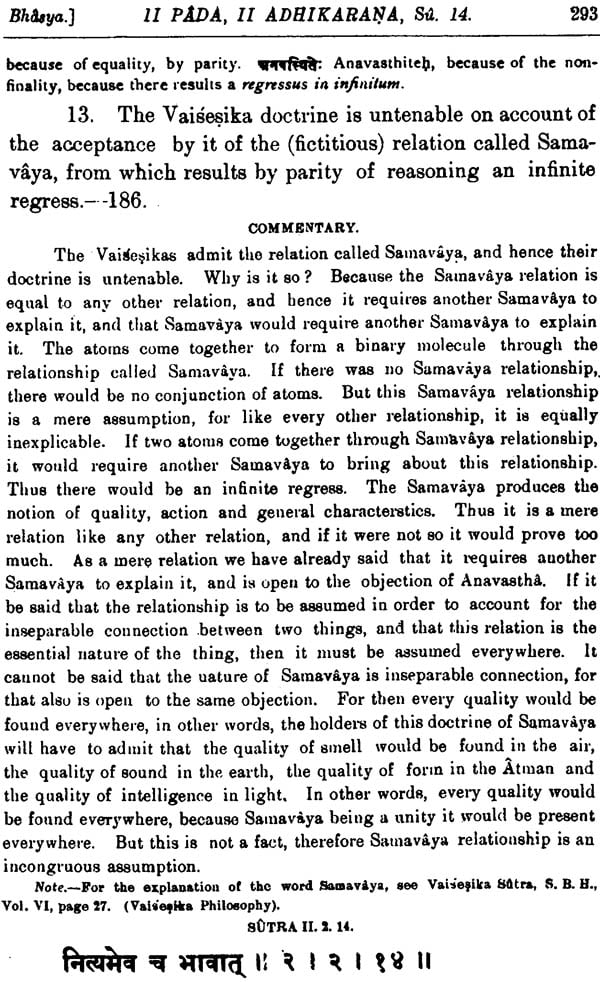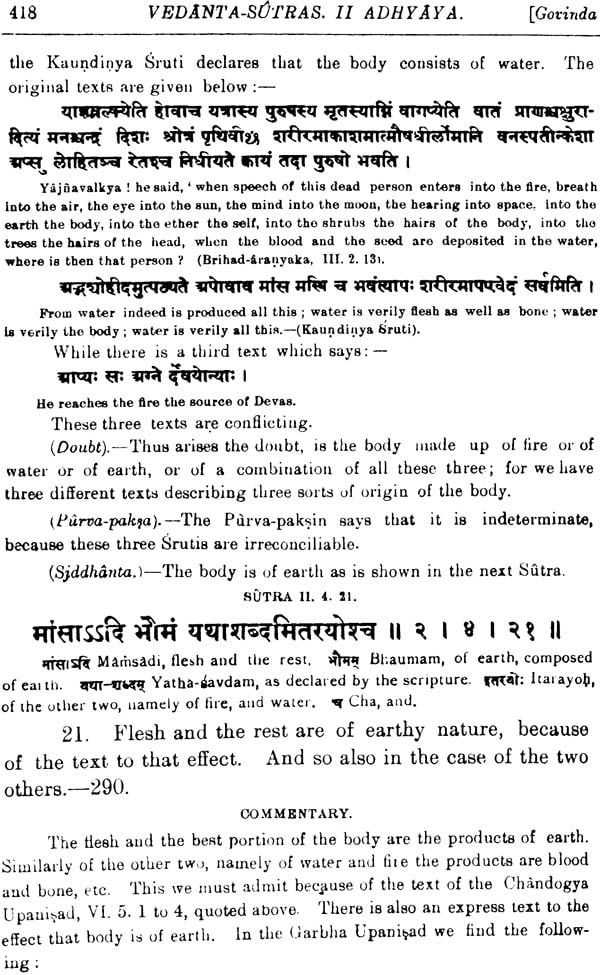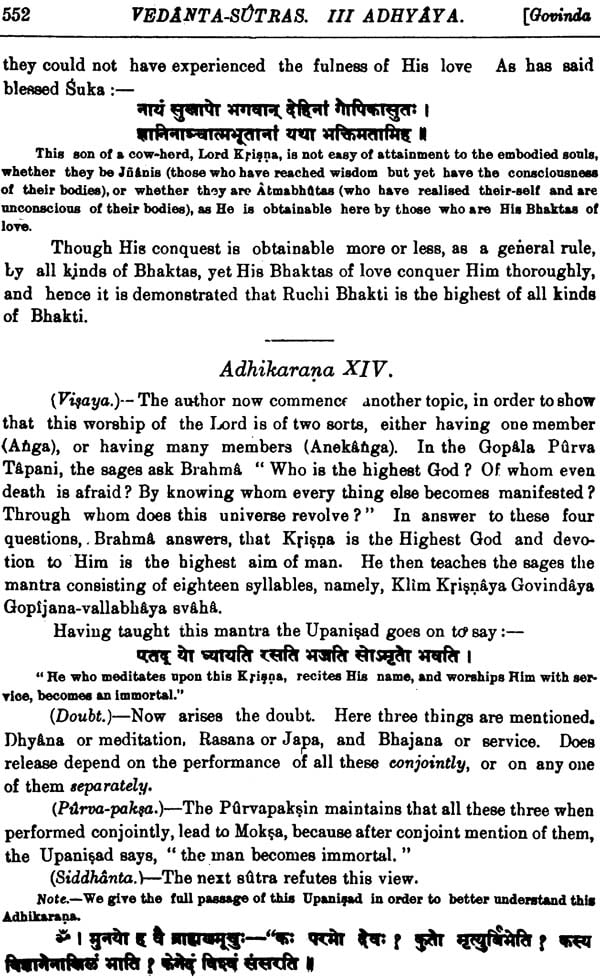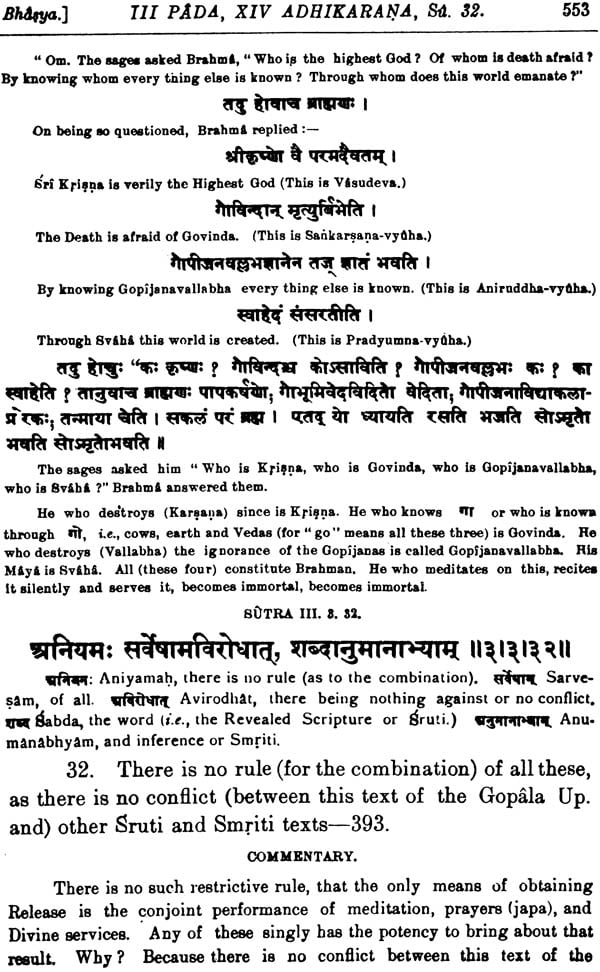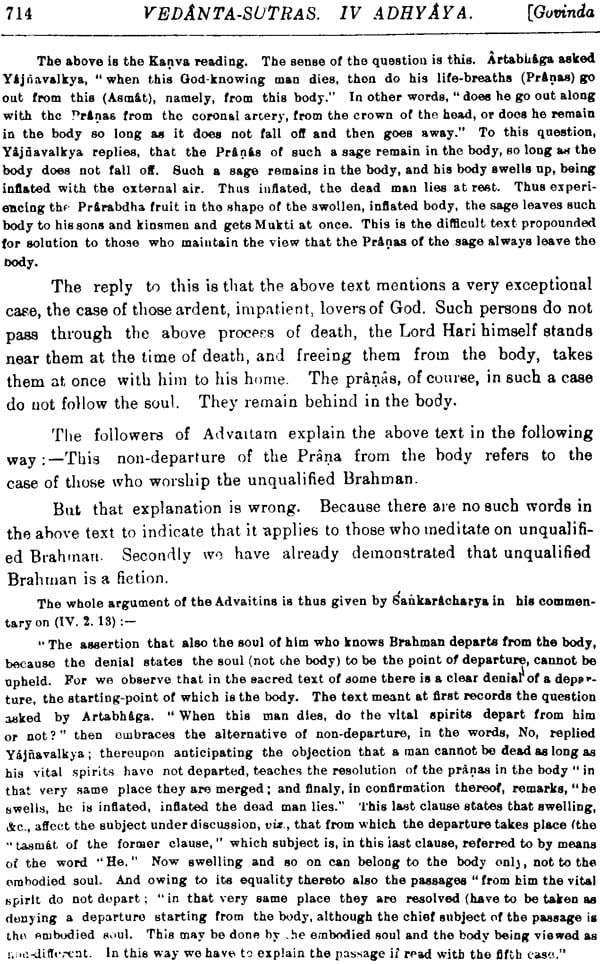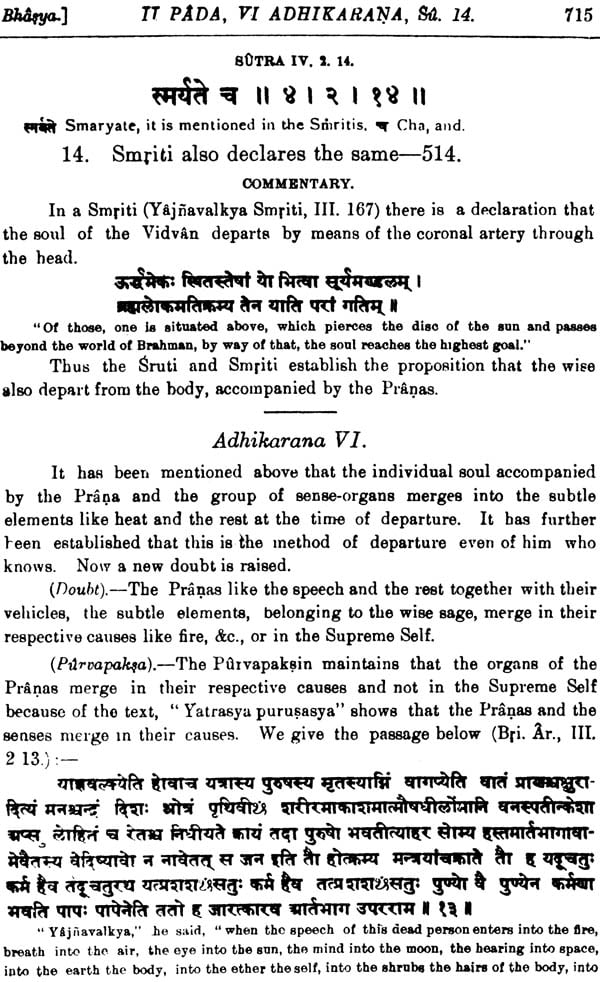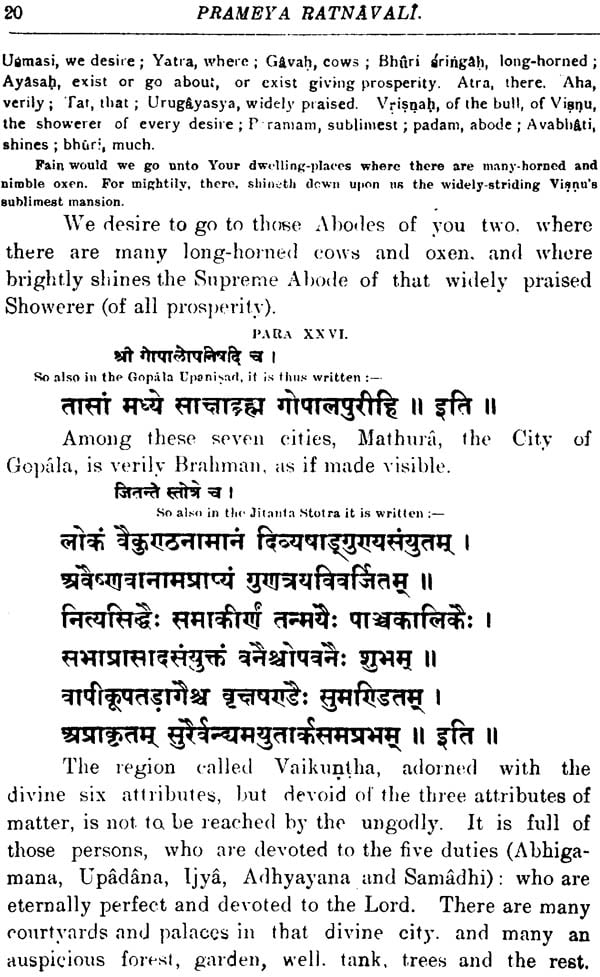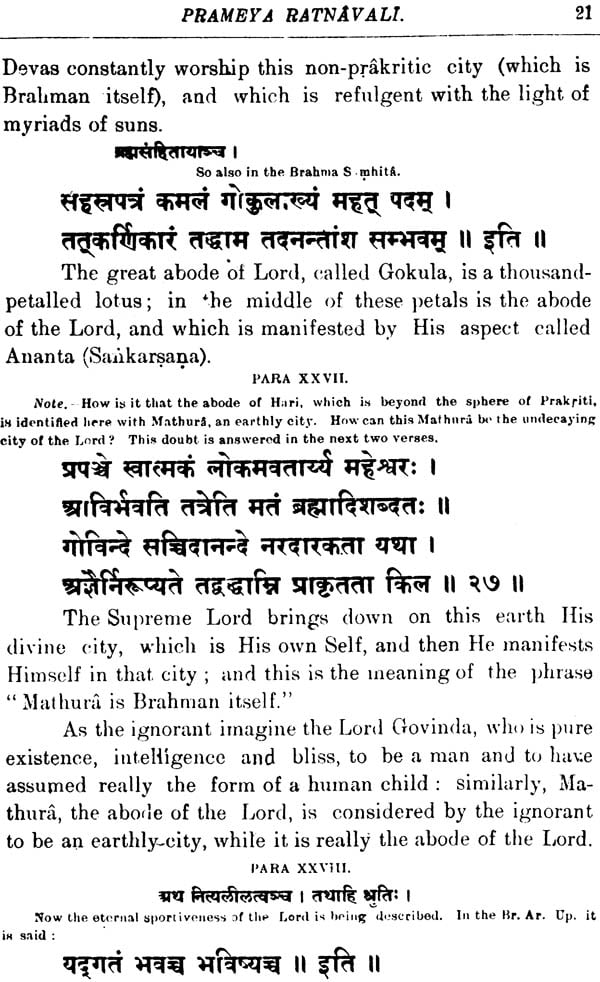
The Vedanta-Sutras (Brahmasutras) of Badarayana with the commentary of Baladeva
Book Specification
| Item Code: | ISL107 |
| Author: | Srisa Chandra vasu |
| Publisher: | MUNSHIRAM MANOHARLAL PUBLISHERS PVT LTD |
| Language: | English |
| Edition: | 2019 |
| ISBN: | 9788121510585 |
| Pages: | 900 |
| Cover: | Hardcover |
| Other Details | 9" x 5.5" |
| Weight | 970 gm |
Book Description
The Vedantasutra of Badarayana is one of the great philosophical works of India. It deals with those fundamental questions concerning man's existence, that still remain an enigma despite all attempts of eminent philosophers and religious leaders both past and present, of this world at unravelling its mysteries. The teachings of the Vedas, the doctrines of contemporary philosophers and the purport of important passages from Upanisads are its subject-matter. It is at once a repository of all earlier knowledge, a genesis for further philosophical speculation and an evaluating scale for new metaphysical ideas. Its scope being universal and timeless, Badarayana resorted to a terse and aphoristic style for compressing a vast body of knowledge into such brief statements that could easily be memorized. The sutras are something more than an aphorism; for each, though brief to the point of being obscure, is so pregnant with meaning that interpretation has become difficult and resulted in the growth of an unending line of commentators, both Indian and foreign, spanning centuries from Sankara the earliest, passing through Bhaskara, Ramanuja, Madhva, Srikantha, Nimbarka, Sripati, Vallabha, Suka, Baladeva to Radhakrishnan the latest.
This book, known as the Govinda Bhasya, is the commentary of Baladeva, who was a disciple of Sri Caitanya (AD 1485-1533) the famous Vaisnavite saint of Bengal. Its approach is theistic and based on the teachings of Madhva and Caitanya. The English translation is faithful to the original.
The Vedanta Sutras of Badarayana are contained in four Adhyayas or books. Among the six schools of philosophy, the Vedanta is the most popular and the best studied. The Sutras of Badarayana are about 560 in number, and 80 concise and abstruse, that without a commentary they are hardly to be understood. It is difficult to find the connection between the successive S6tras, merely from the Sutras themselves. Being a work of exegetics one would expect them to give reference to the passages which are being explained; but there is hardly a single Sutra which gives unmistakable reference to any passage of the Upanisad. The result is that the various commentators have tried their ingenuity in finding out the passage or in imagining the text which is the subject of discussion in any particular S6tra. That they have not been consistent even on this broad point, 'rill be clear to anyone who will study the various commen- taries, the translations of which are before the public. In my opinion, the the sage Badarayana intentionally constructed the Sutras in such a way that they may be of universal application, and may not be confined to The exposition of any particular religion or text. They contain universal principles of religion and philosophy, true for all times and ages, and not confined to the sacred literature of the Hindus alone. An interpretation of the Sutras in this light is a desideratum.
Baladeva, the author of the Govinda Bhasya, was a follower of Sri Chaitanya, the last of the Avataras. He wrote this commentary under the command of Lord Krisna at Vrindavana and called it Govinda Bhasya, because the Lord, as Srt Govinda, told him in a dream to compose it. It is a theistic Bhasya and in his tika on it, said to be written by himself, Baladeva thus gives the' guru-parampara (or the apostolic succession) of the great teachers from the Lord Krisna down to Chaitanya.
The succession of the Gurus is 88 follows :-
Sri Krisna Brahma, Narada, Badarayana, Sri Madhva, Sri Padma- nabha, Nrihari, Madhava, Aksobhya, Jayatirtha, Sri Jnanasindhu, Daya- nidhi, Vidaynidhi, Rajendra, Jayadharma, Purusottama, Brahmanya, Vyasatirtha, Laksmipati, Madhavendra. He had three disciples Sri lswara, Adwaita, Nityananda, these are all teachers of the world (Jagat-gurus), we pay our reverence to these all; and lastly, to the Lord Sri Chaitanya Deva, who was the disciple of Sri Isvara, and who saved the world by the gift of the love of Srt Krisna
As regards the history of this commentary the same glossator writes thus:-
Baladeva, the wise, composed this commentary under the command of Sri Govinda and hence it is called the Govinda Bhasya. Having studi- ed all the Vedantas from his Guru and all the Upanisada so loved by the Lord of Laksmi, one should study it after having read the Sankya texts and the SRStfltS allied to them. Having bathed and performed the morning duties, the teacher and the pupil should study this Bhasya, recit- ing Santi at the beginning and at the end. As through laziness men are not inclined to study voluminous books, therefore I bare composed this concise gloss on the Govinda Bhasya called Suksma Tika. That Lord Govinda under whose command the Vid)•Abh6!lal.la (Baladeva) composed this commentary, may He help me in this my undertaking also. May the lovers of Vedanta and the worshippers of the lotus-feet of Sri Krisna have their compassion on me.
In modern times, no book is considered authoritative unless it be- longs to some particular Sampradaya or school or Church. Among the Vaisnavas, four such schools are recognised as authoritative, namely, those of Ramanuja, Madhva, Visnu-Swami and Nimbarka, as will appear from the following extract from the same gloss :-
All mantras not belonging to any Sampradaya or school are consi- dered as fruitless. Hence in this Kali age there will arise four founders of schools, namely, Sri, Brahma, Rudra, and Sanaka, the four great Vaisnavas, purifiers of the world. All these four will incarnate in Kali under the influence of the Supreme Lord of Utkala. Sri inspired Rama- nuja, the four-faced Brahma inspired Madhvacharya. Rudra inspired Visnu-Swami, and the four Kumaras taught through Nimbarka.
Baladeva based his commentary mainly on the teachings of these four schools of Vaisnava authors. Sri Chaitanya never wrote any com- mentary on the Vedanta Sutras, nor did his immediate disciples. Accord- ing to them, the Bhagavata Purna is the best commentary on the Vedanta Sutras. Baladeva, who had written many works on Vaisnavism, and was perhaps the most learned among the followers of Sri Chaitanya, has written this theistic• commentary and his explanations are in many places really an improvement upon those of his predecessors.
The text of the Baladeva Bhasya, with the gloss called the Suksma Tika, was first published by Pandit Syama Lal Goswami, a descendant of Lord Nityananda. The edition being, however, in Bengali character, is not available to the whole of India and it is intended to bring out a revised text in the Sacred Books of the Hindus series in Devanagai character.
This translation of the Govinda Bhasya is more in the nature of a paraphrase than a literal translation. I have Dot hesitated in expanding the author's arguments, and supplementing his short references by fuller quotations from the sacred texts.
